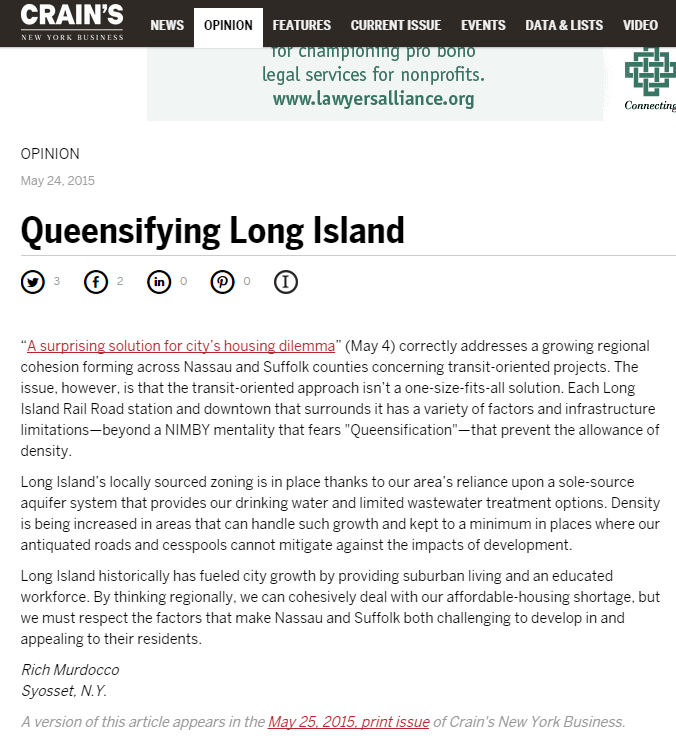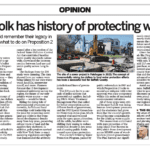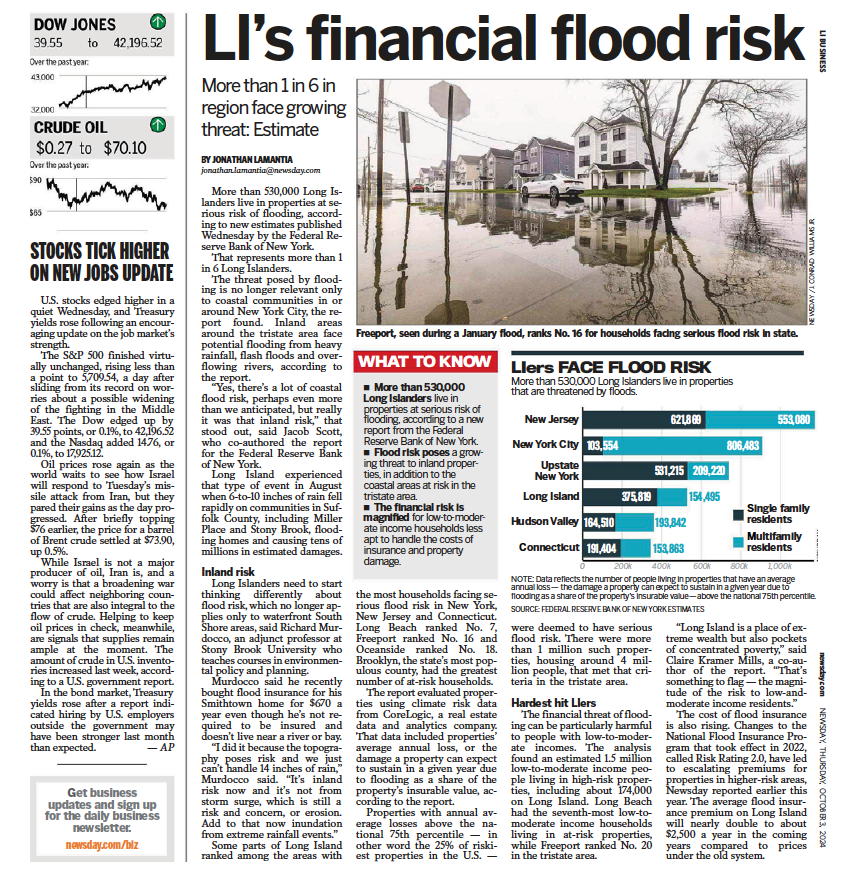The following appeared in the May 25th, 2015 edition of Crain’s New York Business. The original piece can be read here.
“A surprising solution for city’s housing dilemma” (May 4) correctly addresses a growing regional cohesion forming across Nassau and Suffolk counties concerning transit-oriented projects. The issue, however, is that the transit-oriented approach isn’t a one-size-fits-all solution. Each Long Island Rail Road station and downtown that surrounds it has a variety of factors and infrastructure limitations—beyond a NIMBY mentality that fears “Queensification”—that prevent the allowance of density.
Long Island’s locally sourced zoning is in place thanks to our area’s reliance upon a sole-source aquifer system that provides our drinking water and limited wastewater treatment options. Density is being increased in areas that can handle such growth and kept to a minimum in places where our antiquated roads and cesspools cannot mitigate against the impacts of development.
Long Island historically has fueled city growth by providing suburban living and an educated workforce. By thinking regionally, we can cohesively deal with our affordable-housing shortage, but we must respect the factors that make Nassau and Suffolk both challenging to develop in and appealing to their residents.
Rich Murdocco
Syosset, N.Y.










